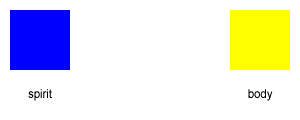Well let us examine this "refutation" of what one might regard as Christ illustrating post mortem punishment. Here's what you say:
L
uke 16 is an ALLEGORICAL scenario that Jesus set forth to emphasize the guilt of the Pharisees in not spiritually feeding the people. A depiction of a literal hell-fire is not his intention, any more than a person in Hell could actually speak to a person in Heaven, or any more than a single drop of water could help quench the pain of being in a literal burning fire. (Look up what "allegory" means.) We have talked about Hell and what it means. It is translated from the word "Hades" and means the GRAVE. There is nothing in Luke 16 that is literal, except the hypocritical position of the Pharisees.
There's nothing wrong with suggesting the tale is allegorical, which means it is to be understood symbolically, the characters having some meaning. Your suggested interpretation belittles Christ's efforts since there's next to no symbolic meaning attached to the characters.
We know Christ's parables are NOT literal, so there's no need to defend against that charge. But they DO contain illustrative truth, else they are poor parables.You think the entire point of Christ's Lazarus parable is to illustrate guilt, with no explanation as to why the rich man should feel pain or guilt while the other is apparently comforted. You believe that after death there is no guilt or pain, so Jesus - you might say - is talking nonsense in choosing a post mortem scenario in which to couch his lesson. The lesson you think he imparts is so trivial and so completely irrelevant to the scene Christ sets that it is amazing that you put this forward as an explanation of the parable.
Yes, symbols are used but as with any literature one must find a justification for the symbolic parts of the story: that means interpreting the bosom of Abraham and the awful torment the rich man undergoes. You haven't done that. But in fact you have "negated" the parable in that you have removed sense from it. Christ surely deserves a bit more than a cursory glance.
In conclusion Christ is illustrating via threats and symbols that punishment awaits the sinner. Luke 17:2
“It were better for him that a millstone were hanged about his neck, and he cast into the sea, than that he should offend one of these little ones.�
If he's just going to lie dead in perpetuity, Christ's words don't make sense.







